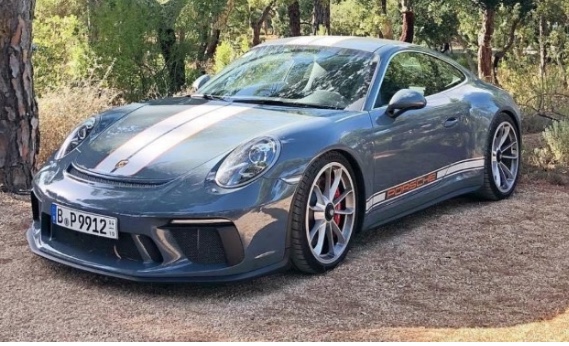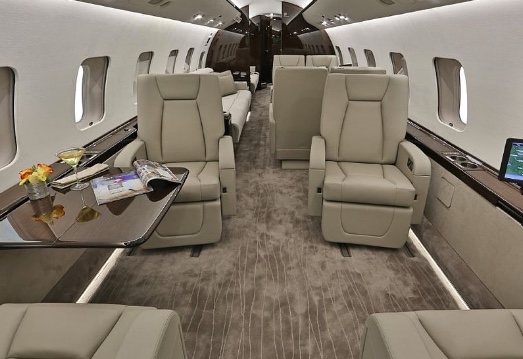Lifestyles of the Rich and Famous – How the UNHWs Will Travel in 2019
D-Resort, Göcek
By Michael Phillips
The Wealth-X World Ultra Wealth Report 2018 reveals the demographics of the global ultra high net worth (UHNW) population and the trends influencing them, as well as forecasting growth of this segment into 2019 and beyond. In fact, by 2022, the UHNW population is expected to total more than 360,000 individuals – a rise of over 100,000.
Despite their collective wealth, the current population of 255,810 UHNW individuals is a small market in absolute terms – even for niche luxury brands that target the most discerning consumers. Though many of these elite organisations covet the patronage of these consumers for the prestige and spending power they bring, they can be a difficult group to understand, especially as it continues to grow and diversify in the year ahead.
Some luxury marketing teams have taken a direct approach in shining a light onto the world of UHNWs. At Porsche, Marek Grzebin is responsible for a dedicated UHNW-focused strategy team, formed because of these clients’ fundamental value to the business. “They are spending a lot, buying very, very expensive models and spending even more on personalisation,” he says. “We need to treat them differently.”

This recognition of difference and perceived value does not always mean that luxury marketing teams specifically engage this group, particularly if their wider target audience has greater aspiration potential – luxury hospitality is a prime example. These brands need to ensure they welcome those who can afford the experience while maintaining an association with an elite audience. Adelina Wong Ettelson, Head of Residences Marketing at Mandarin Oriental recognises UHNWs as “a natural and organic segment for a five-star luxury hotel group” – albeit one they do not actively target.
Their influence is undeniable though. In the modern world, the individual influence of powerful people is one of the greatest tools a brand can have. “These people are very, very successful” says Grzebin. “They are role models, influential in their communities.” Being able to attract the most discerning consumers in the world is especially advantageous for brand image. “Other people looking up to them see that they can afford any car on earth,” he says. “But they drive the car they drive because they love it.”
It is not, however, a one-way relationship; UHNWs can be highly demanding and expect more from luxury brands. For them, the garden variety of luxury product or service may not be sufficient, or even desirable, and it can be a constant battle to attract and keep them. “The main challenge is how to engage and stay relevant to UHNW individuals,” says Wong Ettelson at Mandarin Oriental. “They are interested in personalisation and sophisticated-yet-authentic offerings.”

Grzebin at Porsche agrees: “We are seeing a very strong, solid demand for the limited editions and special models – this target group doesn’t want anything off the shelf. And even when they buy a limited model, they personalise it even further.” While this can be good for business, it does present problems when supply fails: “When they don’t get a limited model they want, they get disappointed, writing letters to our board members,” Grzebin says – a natural hazard of upsetting the best-connected individuals in the world.
Appealing to this demographic beyond product is ever more important, to ensure they feel special and appreciated. This is particularly valuable when they get to experience things not usually available or accessible to everyone – even those with comparable resources. “They are always looking for ‘money can’t buy’ experiences, and this is something we try to provide,” says Grzebin. However, this can be difficult to achieve when you don’t fully understand what makes them tick, what matters to them. “It’s very much about personal contact, so very one-to-one,” he adds.
How easy is it to get close enough to UHNW individuals to understand them? To provide them with moments of delight in experiences they value and can’t get elsewhere? It is a paradox, says Wong Ettelson; they want to be known, but not known. “It has been increasingly challenging to reach and connect with them,” she says. “Privacy is a real concern and yet they want to be alerted to what they care about. We have to find the balance between catering to their needs whilst also respecting their privacy.”
So is the recent annual addition of 30,000 individuals – almost three times the UHNW population of Hong Kong – of the world’s ‘hard to please, hard to know’ UHNW population alarming?
“On the one hand it would be easy to say so,” says Porsche’s Grzebin. “But we will not be the right brand for every new UHNW… And we will not just develop a product simply because the population is growing. This wouldn’t be the Porsche way.”
This points to another issue that tends to rear its head when it comes to analysis of this fast-growing but still rather tiny group – the assumption that they are one amorphous group and all relevant consumers because they have great wealth in common. The reality is that the population of UHNW individuals is not only truly diverse – a microcosm of the wider world’s cultural, educational and commercial variety – but is also changing, albeit gradually.

Historically, ultra-wealth has been associated with older men, a reflection of the time it has traditionally taken to build industrial and commercial empires, but now there is greater age diversity as fortunes are being built by younger individuals in shorter time periods. Our archetype of the Asian industrialist in WUWR 2018, for example, shows an average age in the late 50s – young for UHNW wealth, and a far cry from the octogenarian titans of the first industrialist age. Another development that proves the evolution of this group is the record high of nearly 35,000 women in the global UHNW population, with a growth rate of 31 percent: “Women as a high-growth segment is encouraging” says Wong Ettelson. Grzebin agrees, and notes that they have already seen increased interest from UHNW women in certain parts of the world: “We have, on average, the highest number of female customers in China, for instance, compared to Europe and North America,” he says.
Over the next four years, Wealth-X estimates the fastest growth will be achieved in the Asia-Pacific region (with a CAGR of 8.3 percent from 2018-2022), a continuing trend in recent years. “The general trend of UHNW growth of Asia is consistent with our experience” says Wong Ettelson. And it is not just a China story; six of the top ten fastest-growing UHNW populations are in the Asia region. Are luxury brands worried they aren’t prepared for a population of UHNWs that is bursting through the 300,000 mark in a little over a year? Cautious optimism seems to be the tone, balancing client satisfaction – all of whom will expect VIP status – with commercial and brand success. This will be challenging, says Grzebin. “Even if we don’t need to offer them something which is expensive to make them happy – speaking to a designer, getting behind the scenes access – we can only open doors for a few. It becomes almost impossible if you have to offer such exclusive ‘money can’t buy’ events for 5,000 people.” For more information on the global UHNW population, download the Wealth-X World Ultra Wealth Report 2018

